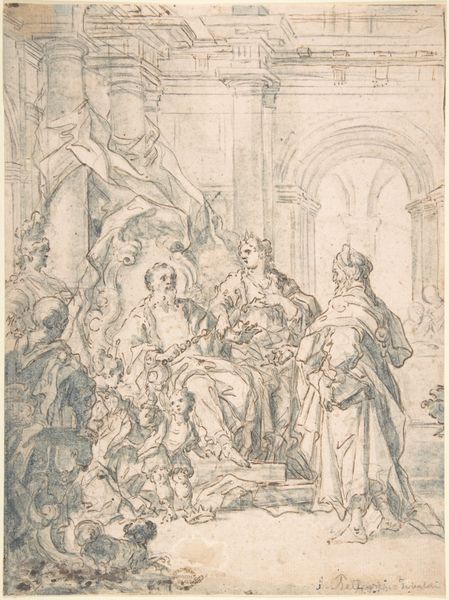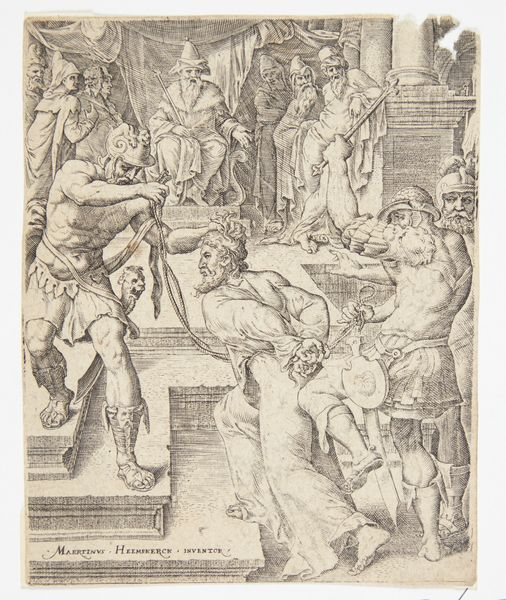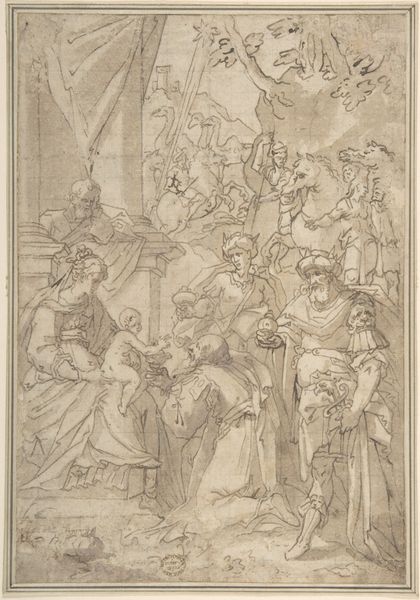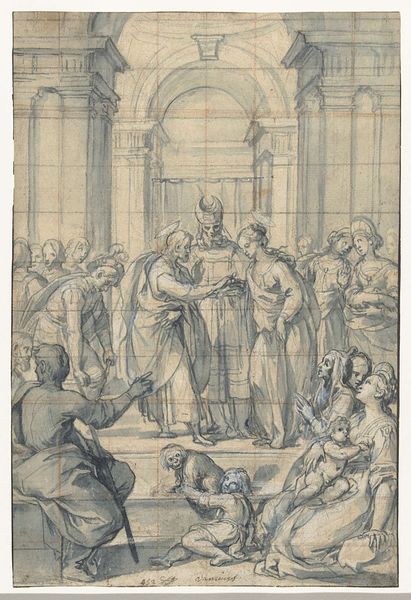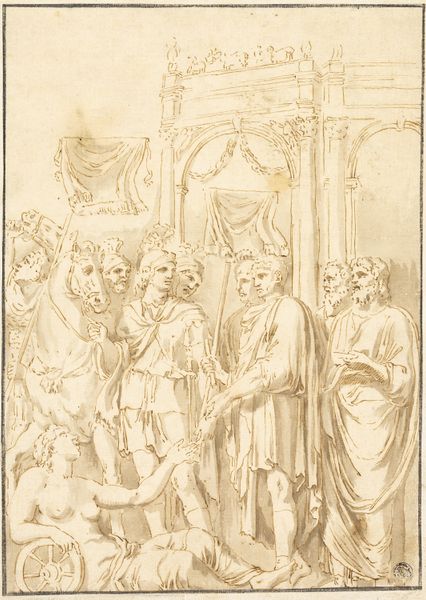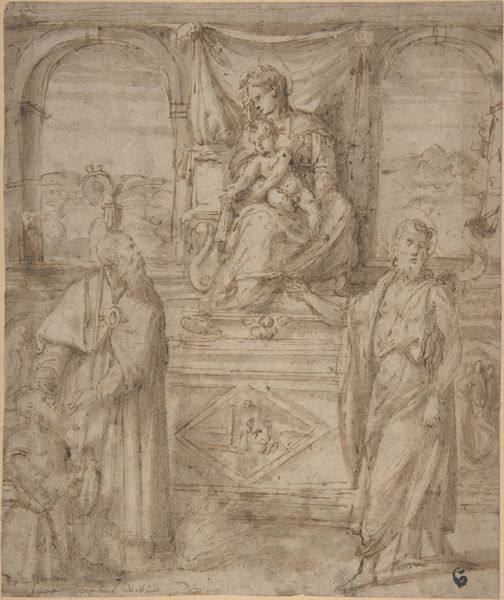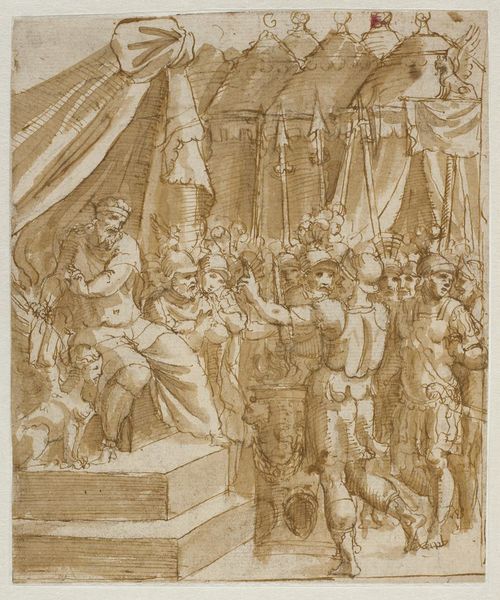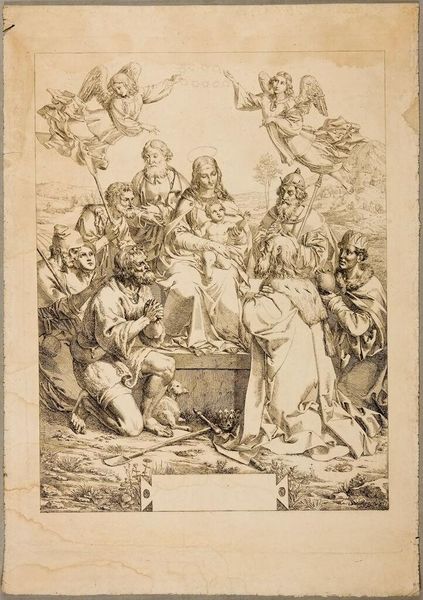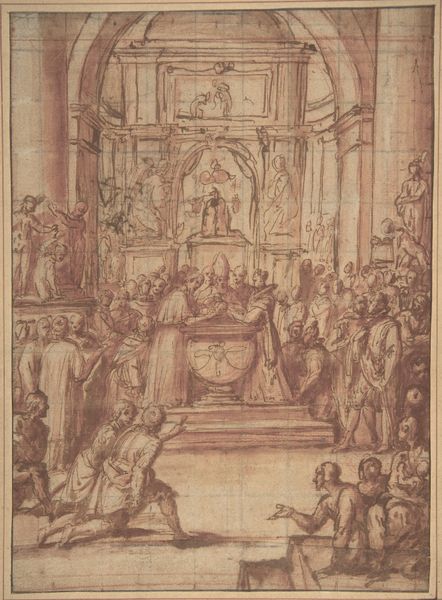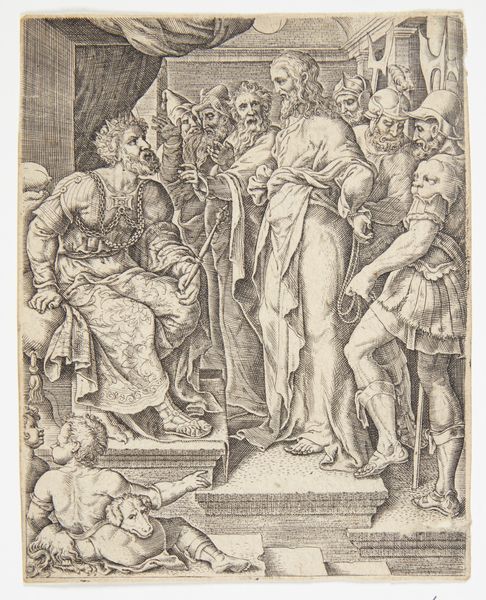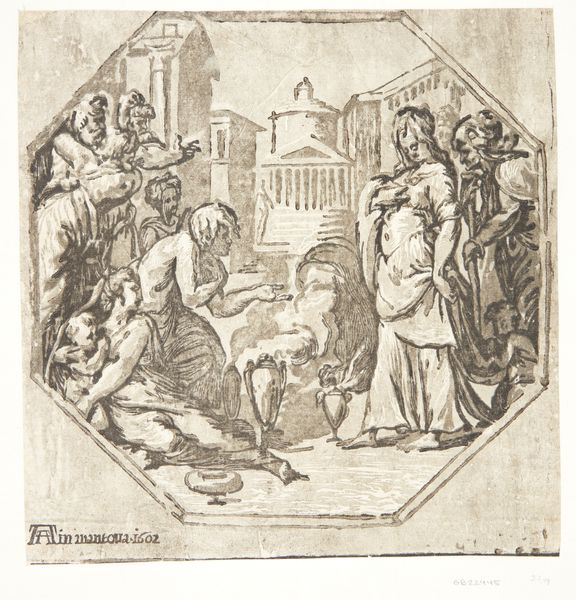
drawing, print, oil-paint
#
drawing
#
allegory
#
baroque
# print
#
oil-paint
#
figuration
#
oil painting
#
history-painting
#
academic-art
#
italian-renaissance
Dimensions: 8 1/8 x 6 9/16in. (20.6 x 16.6cm)
Copyright: Public Domain
Editor: Here we have Alessandro Tiarini’s “Allegory of the Trinitarian Order,” likely from sometime between 1577 and 1668. It’s a drawing with what looks like ink or reddish chalk. The composition seems divided between an earthly plane and a heavenly one… It feels like a study for something grander, given the grid lines. What do you see in this piece? Curator: It’s a fascinating document of its time. Notice how Tiarini uses the visual language of the era to convey power. The Trinitarian Order, prominent figures of their time, are strategically placed, literally elevated. This hierarchical arrangement was incredibly important; it wasn't just aesthetic but a reflection of societal beliefs about divine order and earthly power. Even their gestures—the pointing, the upward gaze—are symbolic. Who do they include in the lower registers and what does that suggest? Editor: There are figures that appear to be from different parts of the world… maybe people the Order served in their missions? Are they supposed to be converts perhaps? Curator: Precisely! The visual symbolism extends beyond the immediate scene. It all points to the Order’s worldly influence, their success in spreading their doctrine. The robes, the crowns being offered… they all weave a narrative of dominance. Even the cloud of witnesses at the top carries weight—depicting the eternal validation they sought. It makes one wonder about the emotional impact such imagery had. Editor: So the image reinforces the Church’s authority… it’s not just a historical record but a piece of persuasive rhetoric. I’m looking closer at the expressions… some faces are obscured in the sketch. How does incompleteness affect the message here? Curator: The sketch-like quality underscores the intent to portray a visual ideal, more symbolic than truly literal, inviting interpretation and contemplation rather than demanding absolute adherence. Understanding its purpose provides such a revealing snapshot of cultural and psychological underpinnings. Editor: I'll certainly never look at similar works the same way again! Thanks for sharing your perspective.
Comments
No comments
Be the first to comment and join the conversation on the ultimate creative platform.
